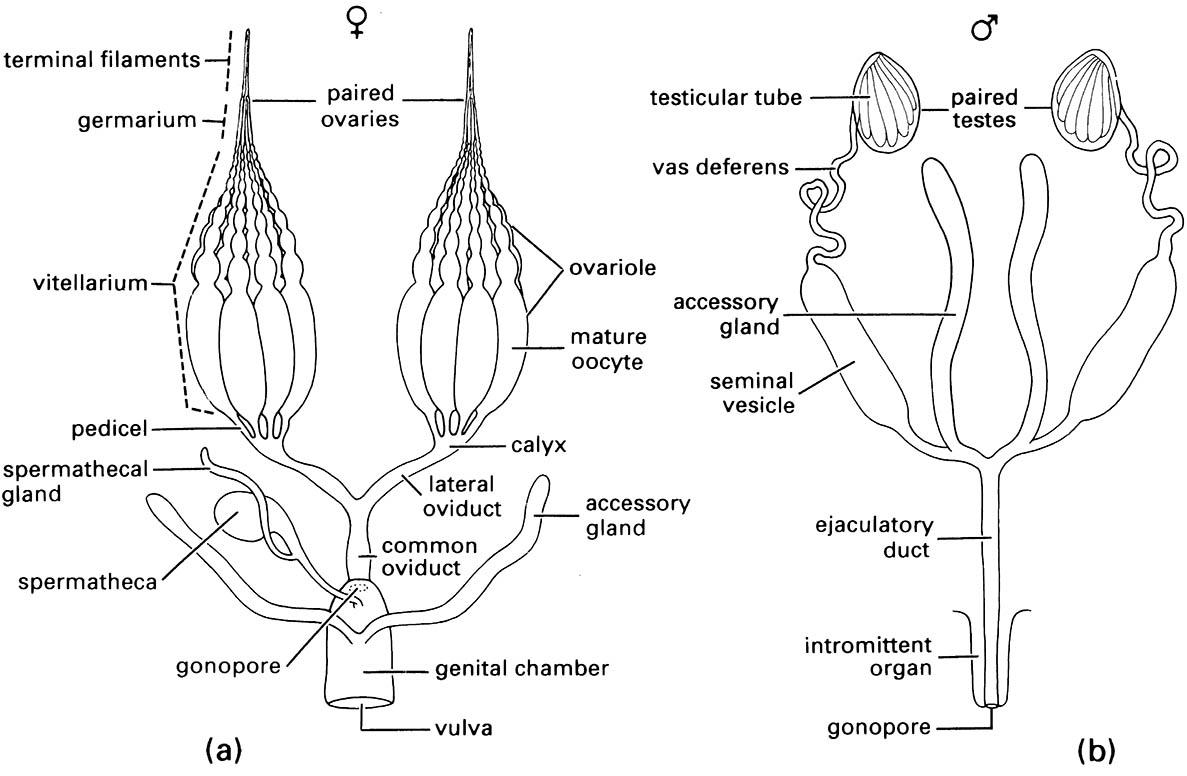3.8. Reproductive organs
The reproductive organs of insects exhibit an incredible variety of forms, but there is a basic design and function to each component so that even the most aberrant reproductive system can be understood in terms of a generalized plan. Individual components of the reproductive system can vary in shape (e.g. of gonads and accessory glands), position (e.g. of the attachment of accessory glands), and number (e.g. of ovarian or testicular tubes, or sperm storage organs) between different insect groups, and sometimes even between different species in a genus.
Knowledge of the homology of the components assists in interpreting structure and function in different insects. Generalized male and female systems are depicted in Fig. 3.20, and a comparison of the corresponding reproductive structures of male and female insects is provided in Table 3.2. Many other aspects of reproduction, including copulation and regulation of physiological processes, are discussed in detail in Chapter 5.
Table 3.2. The corresponding female and male reproductive organs of insects.
| Female reproductive organs | Male reproductive organs |
|---|---|
| Paired ovaries composed of ovarioles (ovarian tubes) | Paired testes composed of follicles (testicular tubes) |
| Paired oviducts (ducts leading from ovaries) | Paired vasa deferentia (ducts leading from testes) |
| Egg calyces (if present, reception of eggs) | Seminal vesicles (sperm storage) |
| Common (median) oviduct and vagina | Median ejaculatory duct |
| Accessory glands (ectodermal origin: colleterial or cement glands) | Accessory glands (two types): (i) ectodermal origin (ii) mesodermal origin |
| Bursa copulatrix (copulatory pouch) and spermatheca (sperm storage) | No equivalent |
| Ovipositor (if present) | Genitalia (if present): aedeagus and associated structures |

(After Snodgrass 1935)

